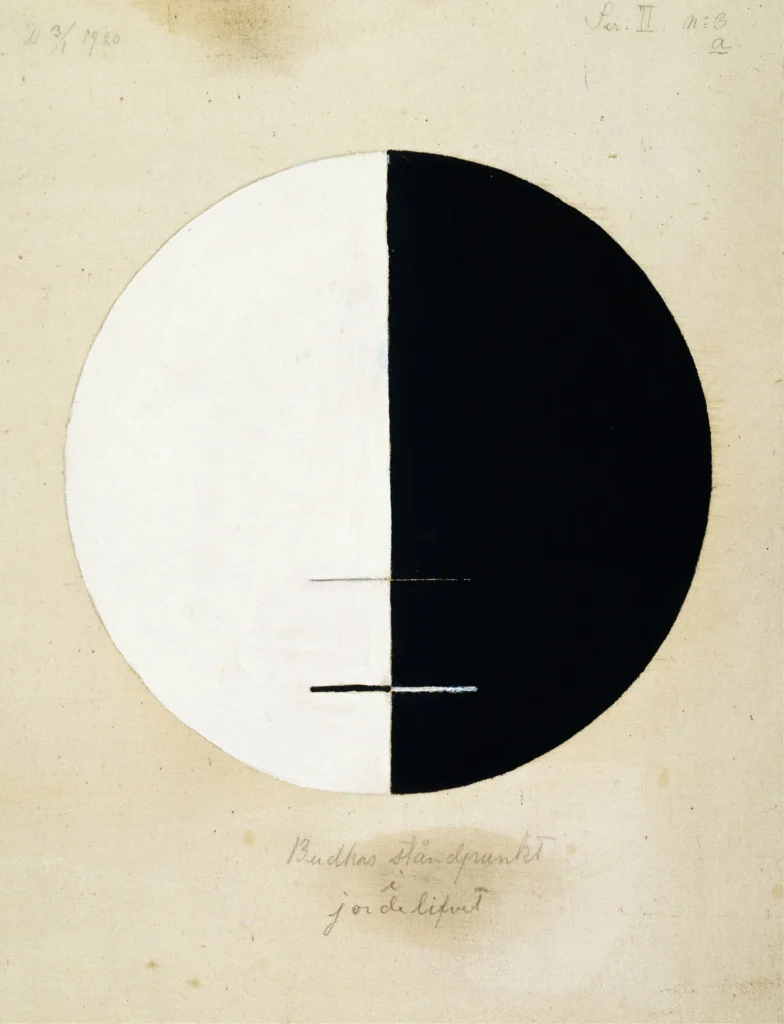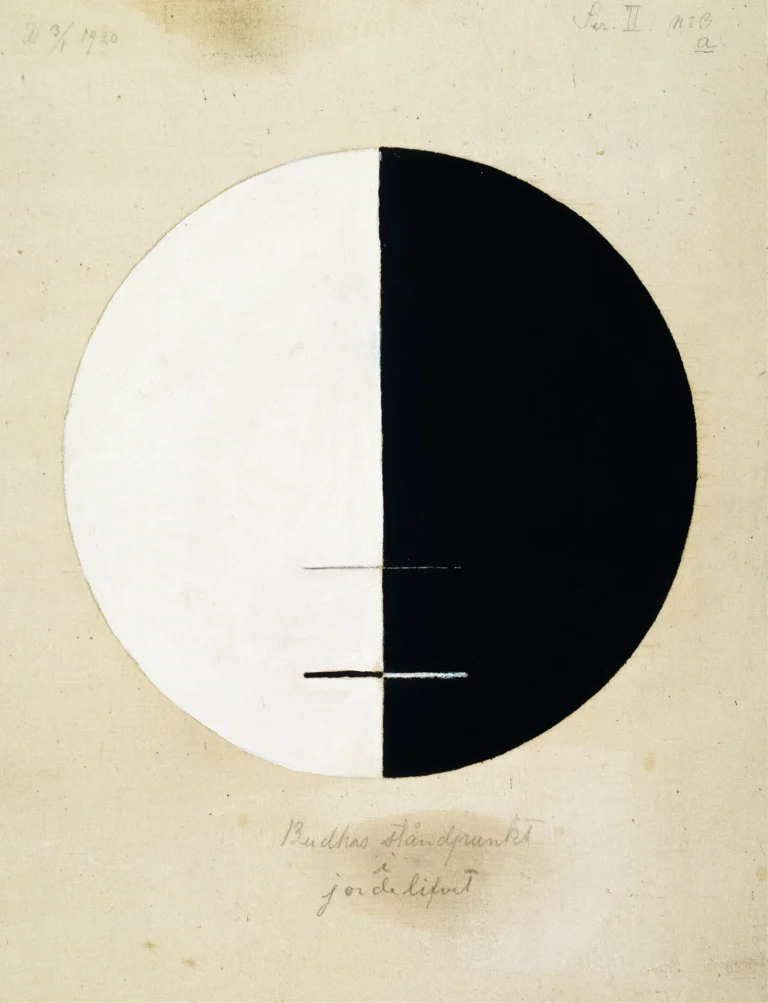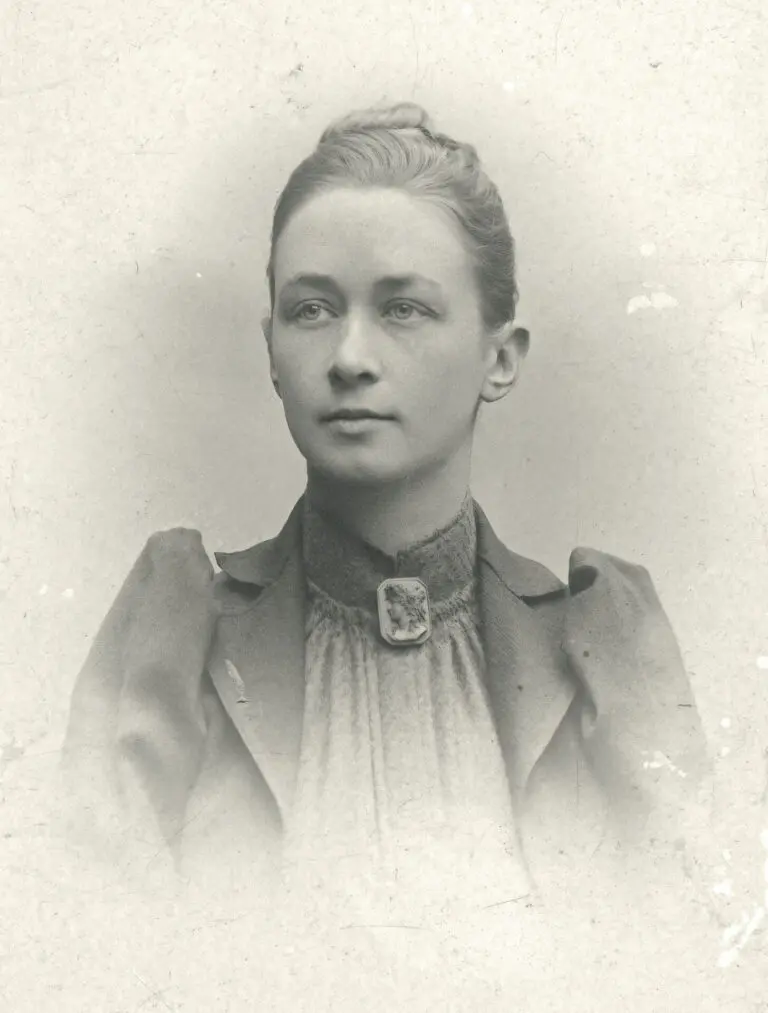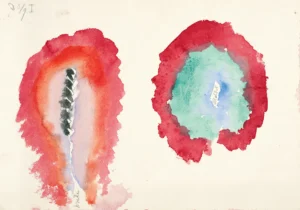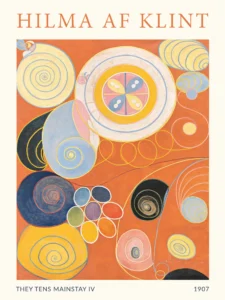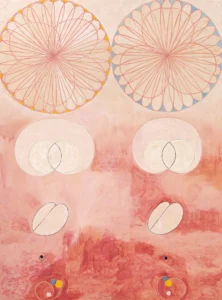Buddhas Standpoint in the Earthly Life No. 3a (1920)
This evocative painting is part of a larger series wherein Hilma af Klint grapples with various religious standpoints through the use of geometric designs and vibrant colors. "Buddha's Standpoint in the Earthly Life - No. 3a" employs intricate shapes and symbolic motifs that resonate with Buddhist philosophies of balance and harmony. Af Klint's unique artistic language reflects her desire to express deep spiritual truths, moving beyond mere representation to connect with the viewer on a metaphysical level.
Year 1920
About the Artwork
Hilma af Klint, a Swedish painter ahead of her time, created "Buddha's Standpoint in the Earthly Life - No. 3a" in 1920 as part of an ambitious series exploring the intersections of art, spirituality, and religious philosophy. Influenced by her studies of various belief systems, af Klint sought to visualize concepts that transcended traditional artistic boundaries. Guided by what she believed to be the communications from the High Masters, ethereal beings imparting wisdom, her work aimed to illuminate and elevate human consciousness. The series begins with a divided circle, a motif that symbolizes the dualities present in life, reflecting her interest in the Yin-Yang philosophy found in Taoism. Through her distinctive blend of geometry and color, af Klint’s art invites viewers on an introspective journey through the spiritual dimensions of existence, establishing her legacy as a crucial figure in abstract art.
Did You Know
Liked what you see? Add it to your collection.
Enjoyed reading? Share it.
... continued
Context and Series
This painting is included in a series where af Klint explored the standpoints of different religions, using geometric and symbolic representations. The series begins with a circle divided horizontally into black and white halves, symbolizing the interplay of opposites, a theme reminiscent of the Taoist Yin-Yang symbol.
Symbolism and Themes
In "Buddha's Standpoint in the Earthly Life - No. 3a," af Klint employs her distinctive visual vocabulary, which includes geometric shapes, bold colors, and symbolic elements. The painting likely incorporates elements that reflect Buddhist philosophy, such as the balance and harmony that are central to Buddhist teachings. Her use of geometry and color aims to convey complex spiritual ideas that are difficult to express in words or through figurative art.
Style and Technique
Af Klint's style in this period is characterized by a blend of abstraction and symbolic representation. The paintings from this series often feature geometric shapes, lines, and circles that intersect and overlap, creating a sense of depth and energy. This approach reflects her background in both art and science, as well as her interest in spiritual and mystical themes.
Significance
This work, like much of af Klint's art, was created with the intention of conveying spiritual and philosophical messages rather than seeking recognition in the art world. Her paintings were often guided by what she believed were instructions from higher, etheric beings known as the High Masters, and she saw her art as a way to enlighten humanity. The painting is now part of the public domain and is widely available for study and appreciation, contributing to the growing recognition of Hilma af Klint as a pioneer in abstract art and spiritual expression.




